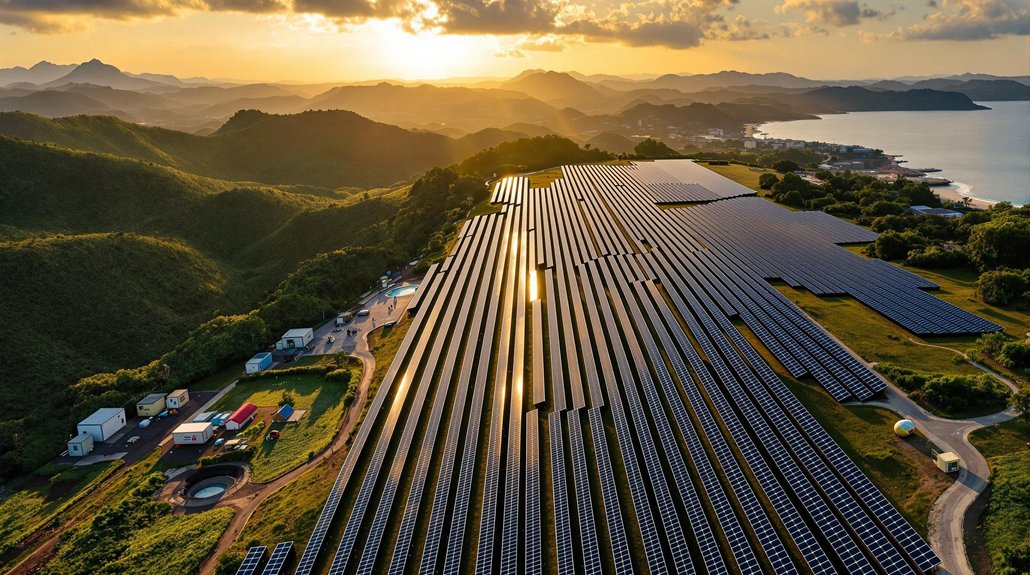The Philippines will launch its fourth Green Energy Auction (GEA-4) in 2025, featuring the country’s first-ever inclusion of battery storage systems. The auction aims to add 9,378 megawatts of renewable energy capacity, with 1,100 MW specifically allocated for solar power plants with battery storage. Winners receive 20-year supply contracts through a competitive bidding process. This initiative supports the Philippines’ goal of reaching 35% renewable energy by 2030. Further details reveal ambitious plans for the nation’s energy evolution.
As the Philippines continues its push toward cleaner energy sources, the Department of Energy (DOE) has announced plans for its fourth Green Energy Auction (GEA-4) in 2025. This auction marks a first in the country’s renewable energy efforts, as it will include Integrated Renewable Energy and Energy Storage Systems (IRESS).
The GEA-4 aims to add 9,378 megawatts (MW) of new renewable energy capacity. A key feature is the allocation of 1,100 MW for solar power plants paired with battery storage systems. This approach helps solve the problem of solar energy’s intermittent nature.
Battery storage integration tackles solar intermittency challenges while expanding the Philippines’ clean energy capacity by 9,378 MW
The DOE released the Terms of Reference for the auction in March 2025. The document outlines how capacity will be distributed across the country’s three main regions: Luzon, Visayas, and Mindanao. Projects will include ground-mounted, roof-mounted, and floating solar installations, as well as onshore wind farms. A transparent electronic bidding platform will be used to evaluate capacity and price offers from participants.
To participate, suppliers must hold a renewable energy service contract or Certificate of Authority. They must also register with the DOE. The IRESS projects are limited to non-operational solar facilities, though existing curtailed facilities may qualify under certain conditions.
Winners will receive 20-year supply contracts with prices set through the Green Energy Tariff (GET) system. The auction uses a competitive selection process based on lowest bid prices. Participants must provide bid bonds and performance bonds as financial guarantees.
The previous auction, GEA-3 in 2024, showed strong investor interest. It attracted 7,500 MW of bids, far exceeding the 4,650 MW target. Energy Secretary Raphael Lotilla expects high interest from solar companies in the upcoming auction. Pumped-storage hydropower was particularly popular with 6,950 MW of bids.
The falling battery storage costs globally should benefit the Philippines’ IRESS projects, making renewable energy plus storage more economically viable.
Looking ahead, the DOE plans to hold GEA-5 in the third quarter of 2025, focusing on offshore wind projects. These auctions support the Philippines’ ambitious renewable energy goals: 35% renewable share by 2030 and 50% by 2040.
The program guarantees transparency and cost-effective deployment of clean energy across the nation.








